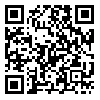1. Hersey, Paul. Kennet, H.Blanchard& Dewey, E.Johnson. (2005).Management of Orga,nizational Behavior. Eight Edition, USA, Prentice Hall Press
2. Batista,Mariada.Garaca.,Furtado,Luis &Silva,Feransisco.(2011).Siuational Leadership and Professional Nurses' Satisfaction: The Example of Hospital.Http://ceeapla.uac.pt/124-132
3. Price, J. L. (1976). The Effects of turnover on the organization. Organizational and Administrative Science. 7 (1, 2): 61-88.
4. Williams, S. Konrad ., Schekler,W.E ., Pathman .Linzer,M ., Mcmurry,Y., Schwardta ., and Gerrity, M.(2001). Understanding physicians' intentions to withdraw from practice : the rol of job satisfactions , job stress ,mental and physical health.Helth Care Management Review.26(1):7-19
5. Thompson, Geir. & Robert, Vecchio. (2009). situational Leadership: A test of Three Versions. The leadership quarterly, 20 (4), 837-848.
6. Garsia, Garsia. Imanuelaa& Santa Barbara, Emilio Sanchez. (2009).Relationship Between Nurses' Leadership and Power Bases.Rev.Latino-Am.Enfermagem. 17/3:31-39
7. Cairns,T.D.(1996).Hersey & Blanchard's situational Leadership Theory: A Study of the Leadership Styles of Senior Executives in Service and Manufacturing Businesses of a large Fortune 100 company.PhD. Dissertation . Nova Southeastern university
8. Bahaudin, G. Mujtaba & Jatupom, sungkhowan. (2009). Situational Leadership and Diversity management Coaching Skills. Journal of Diversity Management. 4/1:290-299
9. Weiss, H. M. (2002). Deconstructing job satisfaction: separating evaluations, beliefs and affective experiences. Human Resource Management Review, 12: 173-94.
10. Mintzberg , M. H.(1983).Power in the Around Organizations. New Jersey Prentice – Hall press.198
11. Boyle, E (2002). A Critical apprassial of the performance of royal dutch shell as a learning organization in the 1990s. The learning Organization. 9(1): 6-18.
12. Locke, E. A. (1976). The Nature and causes of job satisfaction. In Dunnette, M. D. ((Ed.)). Handbook of Industrial and Organizational Psychology. Rand McNally, Chicago, IL, 297-349.
13. Chen,jui Chen.(2004). An Empirical Test of Leadership Effectiveness and the Match/Mismatch in leadership Style. Doctoral of Business Administration Thesis. School of Business and Entrepreneurship, Nora southeastern university
14. Campbell, J.P. (1999). The definition and measurement of performance in the new age. In D.R. Ilgen and E.D. Pulakos (Eds), the Changing Nature of Performance: Implications for Staffing. Motivation, and Development .San Francisco: Jossey- Bass. (399-429).
15. Campion, M. A., Cheraskin, L. & Stevens, M. J. (1994). Career-related antecedents and outcomes of job rotation. Academy of Management Journal 37: 1518-67.
16. Purcarea, Anca Alexandra., Elena, Fleaca and Dan, Dumitriu. (2009). The Influence of Leadership on Employee‘s Behavior. Bulletin UASVM Horticulture. 66-(2), 230-242
17. Monduate, Lourdes & Francis, J.Medina. (2004). Power, Authority and Leadership. Journal of Applied Psychology .5:48-38
18. Renniger, Bet., Georgia. Duran., Anthony. Edwards. Deborah.Wise. & Curtis,Lee. (2008). A study of Leadership, power and Inclusion. Elementary School Journal .11/2:253-281
19. Vecchio,R.P.(1987). Situational Leadership Theory: an Examination of prescriptive Theory .Journal of Applied Psychology. 72: 444-451
20. Shah,N.(2009).Determinates of Employee Readiness for Organizational Change. PhD. Thesis. Brunel Business University
21. Case,Robert.(2002).A Test of Situational Theory in College Football setting . Http://aahpend.contex.com: 169-181
22. Cairns,T.D.,Hollenback,John., Preziosi ,Robert.C. & Snow, William,A.(1980).Technical not :A Study of Hersey & Blanchard's Situational Leadership Theory. Leadership & Organization Development Journal .19/2:113-116
23. York,R.O.& Hestings,T.(1985). Worker Maturity and Supervisory Leadership Behavior .Journal Administration in Social Work.9/4:37-49
24. Waller,D.J.,smith,S.R.&Warnock,J.t.(1989).Situational theory of Leadership.American Journal of Health- System Pharamecy.46/11:2335-2341
25. Fuchs,Toni-Carl.(2007).Situational Leadership Theory: A Analysis Within the European Cultural Environment. Ph.D. Dissertation. Http://Capella University/ 128
26. Hambleton , Ronald.k. & Gumbleton,Roy.(1882).The Validity Hersey And Blanchard's Theory of Leader effectiveness.Group Organization management. 7/2:225-242
27. Chang,Hsiao-Hui.(2005). A research for the Relationship Between leadership Style, employee maturity, Job Performance and Organizational commitment. Master Thesis. http://ethesys.lio.pu.edu.tw
28. Fernandes, Carman. F., and Vecchio, R. P. (1997).Situational leadership theory revisited: a test of an across-jobs prespective. The leadership Quarterly.8(1): 67-84






